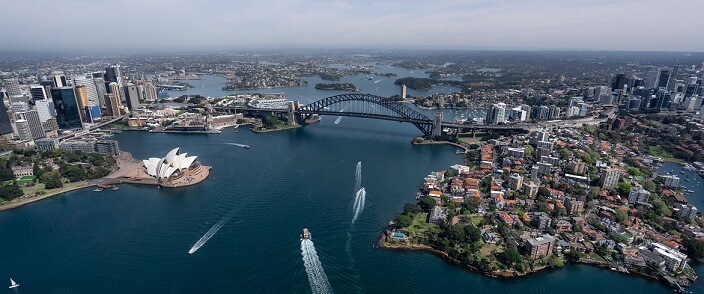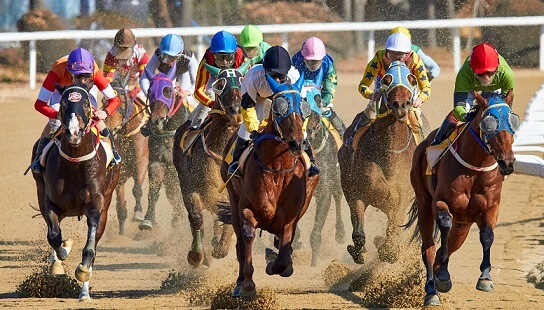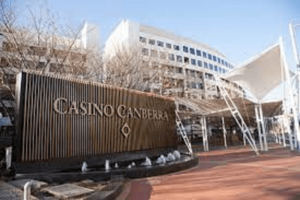Australian Gambling: A Historical and Futuristic Perspective

Gambling in Australia can trace its roots back to the 1700s, where horse racing began gaining traction. New South Wales By 1810, horse racing commenced officially, and by the 1850s, major cities across Australia had established racing clubs.
Fast forward to today, nearly seven out of ten adults in Australia indulge in gambling activities, whether it's through pokies, card games, sports betting, or even quirky events like frog jumping. Australians shell out around AU$198 billion annually, predominantly on lotteries, casinos, and poker, which amount to about AU$171 billion, while the remainder is spent on various other forms. sports betting wagering .
Our write-up provides a snapshot of gambling's journey in Australia, delving into its past, present, and where it might head next. We explore its growth from initial betting forms to the bustling scene we see now. reputable Australian online casinos have developed.
Indigenous Gambling Practices
Putting an exact date on gambling in Australia This phenomenon’s beginnings are somewhat ambiguous, possibly linked to British colonial influence in the 1700s. Early indigenous communities may have wagered on items like apparel, game, and relics.
Another theory posits that European arrivals in the 18th century introduced a coin-flipping game called Two Up, which was popular in Greece and the UK. The gameplay involved tossing coins and betting on the resulting orientations. The biggest wins occurred during the Gold Rush when two pairs of odd outcomes landed.
European colonization significantly altered indigenous gambling traditions, often to the detriment of cultural heritage. The primary goal was commercial gain, leading to gambling as a tool for colonial exploitation and provoked socio-economic challenges, including addiction and cultural disruption.
Colonial authorities diminished indigenous betting practices under moral pretenses, claiming to safeguard indigenous welfare while eroding cultural diversity. Today, many are striving to rehabilitate these traditional practices as a response to commercial gambling’s adverse effects.
Early European Influence
European settlers brought with them structured gambling mirrored after European establishments, stemming from the abundance of both leisure time and resources among colonists. Establishments like racecourses and gaming saloons became elite society's core social spaces.
However, these gambling avenues introduced wide-ranging social impacts among both indigenous communities and settlers. They cultivated social harmony but also exacerbated issues like alcohol dependency and gambling-related social conflicts.
The lack of regulation in gaming houses contributed to rampant gambling and a surge in related criminal acts such as theft, violence, and prostitution, posing significant challenges to public safety.
During the 1930s, Australian regions began implementing gambling controls. For example, Victoria led with the Victorian Totalisator Agency Board in 1961, with other regions soon following suit to regulate betting through Totalisator Agency Boards.
Despite a turbulent start, European gambling roots planted during the 19th century shaped Australia’s cultural and social ethos, remaining an integral part of its identity and drawing millions of visitors each year.
Rise of Horse Racing

The thrilling saga of horse racing is intertwined with Australian history, spotlighting the driving enthusiasm settlers brought along. Though initially meant for the affluent, it rapidly captivated audiences across all strata.
Several key elements influenced horse racing’s momentum: expansive terrains and favorable climate promote ideal racing settings and thoroughbred breeding, alongside abundant betting choices that amplified its allure.
The first horse racing gathering, arranged by the 73rd Regiment officers under Governor Macquarie's orders, occurred in Hyde Park, Sydney, from October 15th, 1810, spanning across two subsequent dates.
- Melbourne witnessed its first race in 1838 at Batman’s Hill, with the Victorian Racing Club emerging in 1864.
- In Queensland, racing debuted in 1843, with the Queensland Turf Club established in 1863, followed by the Brisbane Amateur Turf Club in 1923.
- Adelaide saw its initial racing meet in 1843, with the South Australian Jockey Club launching in 1856.
- Tasmania hosted its first meet at Newton in 1814, with the Tasmanian Turf Club (TTC) making its presence felt in 1871.
- The Darwin Turf Club opened in 1955.
By 1883, about 192 country clubs had aligned under the Australian Jockey Club’s racing guidelines. Now, online betting allows for easy access to betting on both domestic and global races.
Evolution of Horse Racing Betting Strategies
The Totalisator System, commonly known as the tote, emerged as the first structured wagering system in 1913 in New Zealand, fundamentally transforming how people bet, and subsequently spread to Australia, the UK, and the USA by the mid-1930s.
The tote morphed into pari-mutuel wagering, where collective bets determine odds. This remains a favored method in Australian racing.
With the internet boom, professional racing analysts gained prominence, offering data-driven insights and forecasts to boost bettors’ success.
Horse racing has been a significant cultural pillar, uniting communities and amplifying national pride. It continues to flourish, featuring globally esteemed events like the Melbourne Cup.
Lotteries and Alternative Betting Forms
Introduced in the 1880s but initially banned in New South Wales, lotteries gained traction in regions like Queensland, Victoria, and Tasmania. During World War I, Australia initiated its first official lottery, the Golden Casket, for fundraising community and charitable ventures.
The inaugural draw occurred in Queensland in 1916, aiming to aid veterans returning from World War I, later integrating into the Tatts Group in 2007.
Subsequent decades witnessed various legislations expanding lotteries to support necessities like education, public initiatives, and healthcare funding.
Australia now boasts a wide array of lotteries, including Tatts Lotto, Oz Lotto, Powerball, Keno, Set for Life, weekly lottos, soccer pools, and Mega and Super Jackpot offerings.
Up until 1984, horse racing was the sole legal sports betting form. The TAB began accommodating sports wagers, with private bookmakers joining in 1994. In 1996, Centrebet.com.au led the launch of Australian sportsbooks, reinventing as Sportsbet.com.au, later entering collaborations with Paddy Power and Flutter Entertainment.
Currently, numerous online betting operators offer odds on horse racing amidst a medley of sports like football, cricket, and even niche markets like predicting future political leaders. sports Australia’s foray into pokies began in 1953 through the efforts of a Sydney-based company inspired by American successes, with Aristocrat leading the charge by unveiling its pioneering machine, Clubman, succeeded by Clubmaster in 1955.
Casinos and Gambling Expansion
By 1956, pokies became lawful in social clubs and bars, soon captivating a nationwide audience and setting the stage for an evolution into multi-line pay and jackpot offerings—some exceeding millions. Aristocrat The Wrest Point Hotel Casino marked Australia's initial legal land casino, launching in Hobart, Tasmania, in 1973. Other states rapidly followed suit to bolster tourism and economic gains. The 1980s saw five-reel video slots hitting both pubs and online locales, ushering in a wave of enhanced gambling experiences. By the 1990s, poker machines spanned several Australian regions.
Presently, with an arsenal of pokie machines in the hundreds of thousands, Australia stands seventh globally for pokie abundance, outstripping all but a few nations like Japan, the USA, and Germany. pokies .
The Evolution of Gambling in Australia - A Look Ahead from Betsquare
Exploring the Origins and Progress of Gambling in Australia - the Journey from Its Beginnings, its Growth, Future Prospects, and the Double-Edged Sword of its Societal Influence.
Australia's Gamble: A Historical and Futuristic Overview
Tracing Australia's Gambling Heritage and Its Trajectory
Australia's long-standing affair with gambling goes back centuries. Horse racing, making its debut in 1810, quickly set the stage for Australia's robust gambling culture by the mid-19th century, establishing racing clubs in major cities.

Horse racing took center stage in 1810, and by the 1850s, prominent Australian cities had embraced turf clubs. Mobile casinos In the current landscape, a notable 70% of adults engage in various forms of gambling, from pokies to poker and sports betting—even peculiar bets like frog jumping. Annually, Australians spend a staggering AU$198 billion, with lotteries, casinos, and poker accounting for AU$171 billion, while the rest is dispersed across other activities.
Our analysis will delve into the rich gambling history in Australia, its early inception, and our forecast for its future progression. We’ll follow the journey from initial gambling forms to the dynamic scene today.
The realm of real-money online casinos in Australia is vast and diverse.
The introduction of gambling is rooted in the early entries by British colonists in the 18th century, creating game dynamics involving exchanges for clothing and other valuables, despite the patchy documentation of indigenous contributions.
Another viewpoint posits that European newcomers brought with them a game of chance known as Two Up, a popular venture originating in Greece, and known across the UK and Ireland, where players would bet on the outcome of coin tosses.
Colonialism changed indigenous gambling significantly, imposing new commercial games with the goal of exploiting local wealth. This led to issues like addiction and cultural degradation.
Traditional gambling was often banned or eradicated by European settlers, claiming moral ground, yet the prohibition diluted rich cultural heritages, still affecting communities that seek to revive these practices today.
- Problem Gambling and Addiction Settlers from Europe introduced organized forms of gambling, resembling their continental casinos. The appeal of these establishments lay partly in the leisure time and wealth among colonists, making racecourses and what were called gaming saloons popular destinations.
- Community Well-being Gambling's growth altered social landscapes, offering gathering spots for diverse groups yet stirring issues like addiction and alcohol misuse. Both beneficial community bonds and adverse social issues emerged.
- Mental Health The lack of initial regulation in these gambling venues sparked rampant betting, leading to a rise in crimes such as theft and violence that threatened societal stability.
The benefits for the country are:
- Revenue Regulatory efforts were initiated by Australian states and territories; by 1930, races were legally gambling grounds, amplifying with Victoria's totalizer in 1961.
- Tourism Despite its tumultuous beginnings, European-style gambling has had lasting cultural impacts in Australia, remaining deeply woven into the fabric of society and drawing crowds.
- Tax Revenue The roots of horse racing are intertwined with Australia's colonial era, thanks to European settlers embedding their passion for the sport and its accessible appeal to all classes.
- Job Creation Australia provides perfect natural settings for racing, nurturing thoroughbreds and amplifying the allure of betting that broadened sport’s appeal.
Horse racing's foundation can be traced back to the efforts of the 73rd Regiment at Hyde Park, Sydney in 1810. Subsequent clubs steadily emerged across states.
Responsible Gambling Measures
Victoria's first race occurred in Melbourne in 1838, and was followed by the VRC’s formation in 1864. {-{i}-}Queensland hosted its inaugural race in 1843, and developed its racing tradition further with clubs starting in 1863 and 1923.{-{/i}-} Deposit Limits
Adelaide's racing scene began in 1843, boosted by the creation of the South Australian Jockey Club in 1856.
Loss Limits
Racing in Tasmania took off from Newton in 1814, with TTC becoming pivotal in 1871.
Time Limits
By 1883, Australian Jockey Club rules regulated 192 country clubs; today, digital platforms facilitate betting on races worldwide.
Self-Assessment Tests
Chronicles of Horse Racing Betting Systems
Temporary Time-Outs
Dating back to 1913, the Totalisator System revolutionized betting with a centralized system, setting the stage for today's prevalent pari-mutuel betting.
Self-Exclusion Programs
Evolving from the tote, pari-mutuel bets pool wagers, adjusting odds by bettors' stakes—a mainstay in Australian gambling.
Conclusion
Digital growth spurred on expert tipsters, analyzing races and tipping participants to bolster winning odds.
Whether you want to play at
Horse racing not only contributed to Australia's cultural backbone but also engendered national pride, featured prominently by grand events like the Melbourne Cup.
Diverse Betting and Lottery Ventures
new online casinos or those that are best for mobile gaming Skip to main content Lotteries emerged in the 1880s, met with resistance in New South Wales, yet flourished in other regions by WWI under government auspices for funding essential services.






